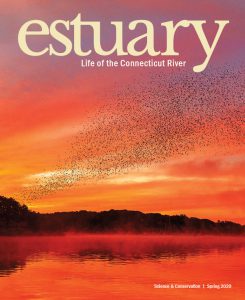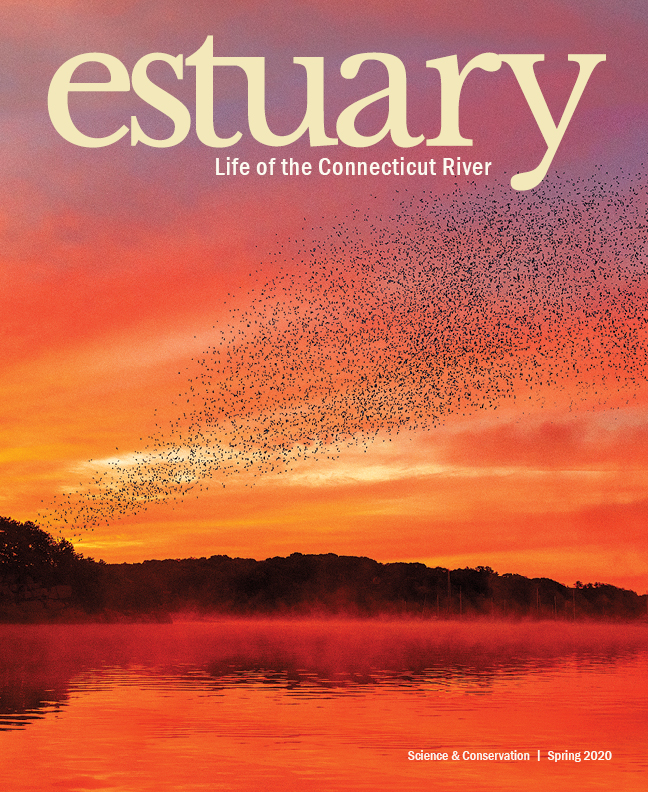
This issue is the thirteenth since Ralph Wood and I started Estuary magazine four years ago. We have published nearly 200 articles and more than 500 photos, maps, and other images, all related to the Connecticut River watershed (note: all previous articles are permanently accessible to all subscribers via the online archives). This past year the sum of subscription and ad revenues came perilously close to expenses. With a little luck, in 2023 we may appear to defy the odds against the success of a print magazine today.
As was our intent at the outset, and as soon as we have the time and whatever else is needed, “our” magazine will be bequeathed in some way to the people and organizations who care most about the Connecticut River watershed and become “your” magazine. Our intent is to ensure an independent editorial philosophy on behalf of the watershed…into perpetuity.
Knowing that more than a few of you are interested, we share with you here the trials and…yes…some tribulations…of the start-up period for Estuary.

The cover of our premier issue in Spring 2020 featured a photo by Jody Dole.
Early on, we sought the advice of experts in the print magazine industry. One of them, a revered and highly successful environmental author, told us flatly: “Print is dead.” Another, Jamie Trowbridge, publisher of Yankee magazine, was gracious enough to take my call. His take: “Print magazines are hard to start, and they are hard to keep going.”
When it comes to developing a proper mindset for the “keep going” phase, Mr. Trowbridge’s remarks were profound. He neglected to add, however, “Whatever you do, don’t launch a magazine one week before the World Health Organization declares an international pandemic!”
Our inaugural Spring 2020 issue arrived in mailboxes on March 1, just ten days before the WHO pronouncement. COVID robbed us of the chaos of a normal start-up, replacing it with the chaos of an almost certainly doomed enterprise. “Should we quit?” The prospect of conjuring up enough energy for another start-up was unthinkable.
Important sales and promotional meetings on our calendar were cancelled and never rematerialized. Our marketing plan, which relied heavily upon voodoo assumptions about social media, was scrapped and reconstituted in a more conventional manner. I recall one somber day later in the year when I had just tallied up about $10,000 in bills for layout and printing of a single issue; that same day in the mail, I opened the kind of letter that always went straight to the trash. It declared: “You have been pre-approved for $10,000.” Ahh…but the story behind the financing of this venture must wait for another time.
Revenue from ads and subscription sales showed a steady increase over the past three years. As we climbed the wall of experience, expenses trended downward but are budgeted to level off in 2023. We reached the point where pinching costs further would infringe on quality…of paper, of content and large images, of the number of articles or number of pages. Based on ample reader feedback, we did not to go down that route.
We have been blessed with a cadre of writers and creative folks who love the watershed and its issues; a couple of dozen attend our virtual story acquisition meeting each quarter, shaping content well into the future. One author, David Holahan, was awarded first place in the Magazine Features category by the Conneticut Society of Professional Journalists for his Estuary Spring 2021 profile of the legendary wildfowl hunting guide, Oliver LaPlace.
Estuary’s creative director, Chris Zajac, has been known to hop in his car to take a drone photo of some dam or other scene—in another state—to make a necessary last-minute fix to an issue. Andy Wolfe, president of Mariner Media, based in downtown Buena Vista, Virginia, and his gifted colleagues, including layout specialist Karen Bowen, put each magazine together with great professional and creative care.
In the start-up days, friends and potential advertisers such as Pasta Vita and the Old Lyme Inn refrained from asking potentially embarrassing questions like, “How many subscribers do you have?” They shared our vision. Growth in ad sales have been spearheaded by Laura Lee Miller; she estimates that more than 5,000 persons will read Estuary in 2023.
Elizabeth Normen founded, then published, Connecicut Explored magazine for some twenty years before applying her talents to create our River Partner program in late 2022. This program, designed for institutions whose missions overlap our own, now includes Audubon Vermont, the Connecticut River Salmon Association, Lyme Land Trust, Connecticut Land Conservation Council, and the Rockfall Foundation. Note upcoming events for these partners in the “Let’s Go” section of this issue.
Tina Birkic arranged speaking engagements for our authors and boat trips for garden clubs and…who knows what, for next year.
One continuing challenge relates to the technical aspects of subscription management. Estuary has great gift appeal. We also enjoy a high rate of renewals. But try to perform these tasks with our system. Tech-savvy subscribers and those endowed with dogged persistence have succeeded. With regard to our policy toward the auto-renew feature in every subscriber’s personal account, we adapted the policy of Readers Digest: inform subscribers of the options before asking them to click on “Pay.” Many, but not all, subscribers have discovered that they have their own personal password-protected account on our website, estuarymagazine.com. By clicking on “My Subscriptions” they can open the way to the archives of all previous articles. In addition, subscribers for whom we have an email address can manage their own accounts. The auto-renew button can be turned on or off. Gifts can be renewed or cancelled. Those who move or have two homes for different seasons can change their addresses. Many of our readers know by now that, when in doubt about any subscription-related matter, they can send a message to info@estuarymagazine.com and we will respond.
With this issue, Spring 2023, we are steaming into the “keep going” phase. Our summer issue will focus on the Farmington River watershed, a Connecticut River tributary. The Farmington has everything: a recent “wild & scenic” designation, world class fly fishing and other recreational water- and land-based thrills, urban water supply, and nonprofits that enrich the region with cultural highlights such as the Hill-Stead Museum and others that care for the ecological future of the Farmington. In the future we will recognize other worthy tributaries and their stewards.
One has to believe that if we can close the gap in the ozone layer, we can surely restore salmon to the Connecticut River.


Dick Shriver
Publisher & Editor

